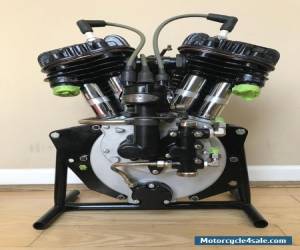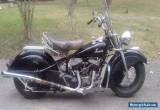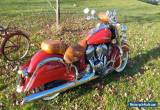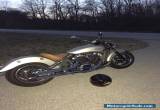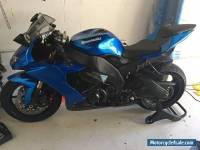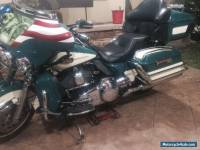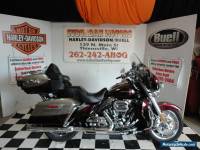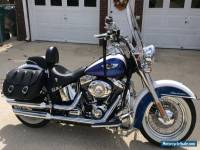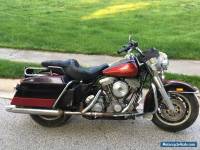 »
Motorcycles for sale in USA » Indian » Junior Scout » 1938 Indian Junior Scout
»
Motorcycles for sale in USA » Indian » Junior Scout » 1938 Indian Junior Scout
1938 Indian Junior Scout
Motorcycle location:
Macomb, Michigan, United States 
Sell Motorcycle in Macomb, Michigan, United States
Sale type: Private Seller
Sell Motorcycle in Macomb, Michigan, United States
WARNING! BEWARE OF SCAMMERS!
MOTORCYCLE4SALE DOESN'T TAKE ANY RESPONSIBILITY FOR ANY SCAM ACTION.
BUY RESPONSIBLY!
Technical specifications, photos and description:
| Condition: | Used |
| Year: | 1938 |
| Mileage: | 123,456,789 |
| Exterior Color: | Black |
| Manufacturer: | Indian |
| Engine Size (cc): | 700 |
| Model: | Junior Scout |
| Warranty: | Vehicle does NOT have an existing warranty |
| Type: | Standard |
| Vehicle Title: | Clear |
| Got questions? | Ask here! |
Do you like this Motorcycle?
| Tweet |
1938 Indian Junior Scout for sale
Current customer rating: Here's really cool project that we didn't get around to finishing. Junior Scout from XXXX. This was running project when we got it, although the XX.XX cubic inch engine was pretty tired. Most of the running gear was non stock so it's not like we decided to chop pristine example.
The engine has been totally rebuilt and is now XXXcc and ready to go. The transmission is complete but does need going over. The frame is the way it was when we got it (dirty but sound). The front end has been straightened and blasted, just needs bronze bushings and it's good.
The wheels are Akront aluminum rims, spoolie front hub and Sportster double disk hub for the rear. One side was going to be adapted for sprocket. The gas tanks were dented and leaking but they've been repaired and repainted with the cool Indian logo. Wheels were laced up by Buchanan with new spokes, might be stainless, can't quite remember.
https://youtu.be/XwXgxceXXtQ for video of it running few years back.
This is the engine rebuild story. Email me for the version with pictures.
XXXX Indian JR. Scout
Many moons ago??� Well, Long ago took on the job of rebuilding this Indian JR. Scout engine. Never being around Indian motocycles, had no clue of what was getting into. At first glance the engine seems to be quite simple and in fact, they are. The JR. Scout is also known as XX.XX, the cubic inch capacity of its engine.
After complete tear down of the engine it looked about what expected, everything that slipped, slid or spun was showing lots of wear. found broken fins, cracked bolt holes and major wear??� and that was upon removal of only one of the cylinders. The heads were total mess with more fins broke off than were remaining with cracks starting from the bolt holes. The valves, guides and seat area of the cylinders were quite worn. Once inside bit deeper, the pistons shown some scuffing on the skirts and were bit loose on the wrist pins. The rods were rattling loose on the crank pin and the complete crankshaft assembly had mile of end play. Every shaft, roller, bushing and bearing was worn and rust pitted. found cracked drive side flywheel at the shaft tapers. There wasn??�t but few parts of this engine that wasn??�t in need of some attention. As looked at everything, regretted the thought of taking on such project. As started checking into replacement parts whole new can of worms opened up. There were other issues hadn??�t expected to pop up such as parts that are not standard for JR. Scout. The heads and possibly the cylinders could be from who knows what other model Indian engine. The cylinders had ????? larger bore than it should have and the fins on the heads were all wrong. It??�s quite possible the cylinders are from another, possibly an older version of larger Scout engine.
I am no expert on anything Indian and needed help with identifying what had and where to find the many needed replacement parts. Ziggys Motorworks proved to be wealth of knowledge for me on all things related to the JR. Scout. What learned was they were the entry level motorcycle at the time and not that many were produced. Another thing learned was they were only produced for few years and there were quite few changes during that time. What was worse is the timing that they were produced, XXXX-XXXX. That was when the United States was coming out of major depression and at the beginning of World War X. All that leads to low production numbers, motorcycles that got thrashed without much repair and then they were scrapped to help with the war effort.
About this time was feeling that had dug myself quite deep hole to climb out of. have an engine to rebuild that is completely worn out, it??�s bit rare and replacement parts are going to be scarce. As luck would have it, some parts on this engine are shared with other models that are not quite as scarce, very lucky for me. Ziggy was able to come up with flywheel to replace the cracked one had. There apparently were three different sets of flywheels used in JR. Scout and they were made of two different materials. There is the light weight cast iron, the heavy weight cast iron and also what was called the ???Z??? metal flywheels that are made of cast steel. There are main shaft design differences during the production years of this engine as well. What had to start with was light weight cast iron set of flywheels and one was cracked. Ziggy was able to come up with heavy weight cast iron flywheel that shared the same tapers and stroke dimensions. With minor machine work and re balancing had usable flywheels again.
Pistons That removed from this engine turned out to not be made for standard JR. Scout, they are larger diameter. The bore diameter should have been two and half inch and these were two and three quarters, quarter inch larger diameter. This thirty and half cubic inch engine is now big bore that is much closer to thirty seven and half cubic inch. That is all fine and well as Indian had produced thirty seven inch engine (XXX?) and pistons were available. The only problem was the wrist pin diameter was larger with the new pistons. That problem wasn??�t real issue as the connecting rods wrist pin bores were worn and needed to be honed oversize anyway. After the rods were honed from the JR. Scout standard diameter of X.XXX??? to the new larger X.XXX??? diameter, things started looking up.
Inside the crankcase, the left drive side bushing was worn. The gear shaft right side the bearing race was worn and rust pitted. At the time there were no bushings available so made replacement from XXX bearing bronze. The inner diameter of that bushing was new first for me at making the groves and the spiral that controls oil flow. have to say it took two tries to get it right; the first spiral cut was in the wrong direction. The spiral is in the bushing to help contain and screw the oil back into the engine as there are no outer crankshaft seal used. After seeing what had done, it was oops, strike one and the second bushing was then easy. The gear side bearing race is part that was available and also fits few other more popular models such as the Sport Scout and the XXX. Same thing as the gear shaft bearing race, the gear shaft and also the crank pin is shared part with other Scout models. With the crankshaft and pistons starting to shape up, it was time to start working out the top end problems.
There was single fin broke off one of the cylinders, the valve guides and their seats were worn and the exhaust port spigots were mess of drilled and cracked holes. One step at time and the broken fin was expertly replaced by no stranger to the Horse staff, Dale Patterson. The cylinders were re ground and honed to accept the new pistons from Ziggy??�s by friend who has been doing them for me for many years, Lon Woodberry at Sunray Products in Vernon Michigan. Lon also surface ground the head gasket surfaces true and flat for good gasket seal. New exhaust port spigots were made from hunk of cast grey iron and sweated in. The valves were another story; the valves had larger head diameter than replacement JR. Scout valves. The cylinder castings do not have enough material to bore for replacement seats as they placed the intake seats very close to now larger by quarter inch cylinder bore. Englishman managed to find some replacement iron valve guides on E-Bay for JR. Scout. After looking them over noticed the valve stem hole diameters were different than the guides had removed. The replacement guides had X/XX??? diameter and the old and worn guides started out at an XX/XX??? diameter. About this time friend of mine Jeff Luft said, just make some valves. thought easier said than done but he assured me it could and has been done many times. Jeff had some titanium Chevy valves that had the stem diameters needed but the head diameter was larger and the stems were longer. Rumor has it these valves were used for dyno test mule NASCAR engines. What turned out to be what felt major issue was not that hard to fix, it wasn??�t that hard to turn the valve heads smaller and shorten the stems as needed. That leads to another problem as the spring retainers and keepers would no longer fit with the different stem diameters. Again Jeff just laughed at me and said use Chevy Caviler four cylinder retainers and keepers. Apparently they use small diameter springs, about the same used by Indian and also keepers that are compatible with the X/XX??? stem diameters. Just because didn??�t have the needed Chevy keepers, noticed that Keepers are the same that Harley used in their evolution big twins and had those. After measuring the seats, turning the valve head diameters down to match, the stems needed to be shortened X/X??? and regroved, we have usable high tech, mix and match custom made valves.
This engine and it seems that all Indian side valve engines use the same design of cam followers and adjustable push rods. Jerry Greer??�s Engineering was able to provide the oversize diameter push rods and adjuster screws. The camshaft followers needed oversize pivot shafts and new rollers to be usable again. Gerry Greer??�s also provided the needed parts plus many more as the time passed by. Lucky for all, the camshafts and their bushings seemed to be great shape.
The oil pump that mounts on the gear cover is simple iron body with rotating shaft inside the also plunges up and down to do its job of supply and returning oil to and from the engine. The main parts, the body and rotating plunger was in good usable shape as is. The unique oil line fittings, plunger caps and mounting hardware had seen better days. The ignition was produced by Auto-Lite and is quite recognizable to many as standard for an Indian. Jerry Greer??�s provided the many small parts needed to rebuild the oil pump and distributor. The gear cover is also the mounting point for the breather tube. Jerry Greer??�s is now reproducing nickel plated breather tube that was needed as the one on this engine had been sawn off and had no clue how to shape correctly fitting replacement.
Quite lot of the hardware the holds this engine together was in sad shape. There were miss matched head bolts and washers. The studs or later to be discovered by me, bolts that held the case halves together were missing. All of the screws that held the oil pump, breather tube and distributer adapter on were chewed up. Head bolts and washers were made from off the shelf grade eight bolts. turned the grade markings off the tops to more resemble the original Indian bolts. The head bolt washers are also off the shelf hard washers slightly modified, bored the inner diameters to size. The head bolts are X/XX??? diameter and the washers started out at X/X??? diameter. The reason to bore the smaller washers was the outer diameter was much closer to what was needed. Case studs were made from cut down Pan or Shovel case studs and rethreaded. Intake seal nuts were chewed up from other than proper tool usage. Mark Silvernail welded up and filed them back into like new condition. Case studs, cylinder base studs, head bolts and washers, intake seal nuts and quite few other screws and other small parts were then Parkerized for natural looking finish for an engine this old. The remainder of the hardware was replacements that are either Nickel or Cadmium plated.
Englishman managed to locate some replacement JR. Scout heads that were in much better shape than what was on this engine. After Mark Silvernail welded the missing fins back on and some machine work, this engine was complete pile ready for assembly. In past articles had shown tear down and inspection, cylinder repairs, flywheel machine work and balancing and to be honest, forget all what else. This article will be showing final assembly.
I would like to thank the Horse staff for being so patient with me and my taking forever to complete this rebuild. would also like to thank those who had helped with information and the education on Indian Motocycles, locating parts, welding and machine work that??�s past my small collection of ability and tools. In no particular order: The Horse staff, Dale Patterson, Lon Woodberry, Mark Silvernail, Jeff Luft, Ziggy??�s Motorworks, Jerry Greer??�s, Kiwi Indian parts, my thanks go to all of you.
Dan R.
Also published at eBay.com
Sell Indian Junior Scout Motorcycle






